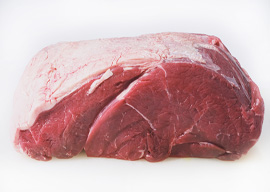
October 21, 2017

Source: Bigstock
I arrived at my house in France recently to find the roses eaten by deer and a drystone wall damaged by wild boar in their eagerness to get at the hollyhocks. One of the bedrooms, moreover, smelled of mice. Is nothing sacred to Nature?
This year we had already had a plague of moths whose caterpillars specialize in destroying box bushes. They were very thorough, I will say that for them: Not a single leaf of a single bush remained. The moth into which the caterpillars developed had cream-colored wings with a gold fringe; rather beautiful when taken individually, but not so charming when they brush into your face by the hundreds, a most unpleasant sensation when you want to sleep and have put out your light. I couldn’t help thinking of Hitchcock’s film The Birds; perhaps it could be remade as The Moths. Slightly to reformulate Stalin’s dictum about a single death being a tragedy but a million deaths being a statistic, one moth is pleasant, but a million are a plague.
We have successfully overcome the weasels in the roof, however. They have never returned since the vermin exterminator put weasel repellent in the fiberglass insulation (I never knew before that weasels were so fond of fiberglass). Alas, the beaver is still tinkering with his dam in the stream, making a terrible mess and felling yet more trees across paths. And the local toads make my wife scream with horror, though personally I am rather fond of them. I find their lugubrious expression, as if the world were going to the dogs, so to speak, oddly consolatory.
I don’t go so far as to say that Nature is malevolent, for that would imply some kind of conspiracy on her part, but she certainly has her inconveniences. Given the damage that the deer and boar regularly do to our garden, I suppose I should be on the side of the hunters against them, but I am not. Whenever I see a group of huntsmen gathered round a deer that they have shot, and compare the beauty and elegance of the slain with the ugliness and coarseness of the slayers, I am afraid the terrible thought enters my head that I wished it had been the other way round.
On the matter of animals and meat I am, as amateur psychologists would put it, conflicted, veering between the ruthless and the sentimental. In my heart, I believe that I ought to be a vegetarian, though I continue to enjoy eating meat. A couple of months ago, for example, I had the best veal chop of my life, furnished by our excellent and amiable butcher. But even while enjoying it, I knew that my enjoyment was bought at the cost of avoidable suffering. Our local abattoir in France had, as it happened, just been in the news because of its appalling practices, someone having taken videos within it. The question immediately arose as to whether the abattoir was unusual in these practices or unusual in having been caught red-handed in them. At any rate, it was closed down.
The day after eating my wonderful veal chop I had to take a flight, and at the airport bookshop I bought a book titled The People of the Abattoir by Olivia Mokiejewski, of whom I had never previously heard. In a sense, it told me nothing that I did not know, or at least did not strongly suspect, but I’d been in the habit of pushing it to the back of my mind and then disregarding it.
The author, who had made a documentary for television called The Life of Pigs, about the way pigs are produced in France (and everywhere else, no doubt), decided to work in an abattoir for a few weeks in order to recount the experience, and to explore the world of abattoirs, in which 50,000 people in France alone work.
She had become a vegetarian at the age of 10 when she saw a calf’s head in a butcher’s window. Connecting meat thenceforth with living creatures (which I think very few of us do, at least most of the time), she resolved to eat meat no more, a resolution that only strengthened with age. She never became a militant, however, and the tone throughout her book is not at all shrill. She commiserates as much with the workers in abattoirs as with the animals, and she describes what she saw and heard with a simplicity that suggests truthfulness:
The abattoir workers’ day generally begins before that of other people, in the middle of the night. While we sleep, the people of the abattoir prepare orders for meat in rooms without windows; they, the workers, exsanguinate, dismember, carve, debone, and package on a production line…. Every day while we sleep, they kill 3 million animals for us, transforming them into steaks, cutlets, or sausages…. I saw the unthinkable: death industrialized, mechanized, cold, to which no one pays attention anymore. A rational and efficient system that kills beasts and crushes men. Workers timed constantly, alienated by the production line, become machines themselves. The ravages of inexpensive meat, there before my eyes…. A world where the fate of animals deeply distressed, and that of men revolted, me.
Though Ms. Mokiejewski has been called a troublemaker, what she says seems to me to have the authentic, indeed undeniable, ring of truth—a truth that, in our hearts, we already know:
In these bunkers where the death of animals and the working conditions of men are hidden, the suffering is silent. The misery hidden. One does not complain. No sentimentality. There is no place for the weak. It is necessary for people to be fed. The difficulty of the work gives pride to those who are able to endure it. The social utility of this work permits it to be accepted.